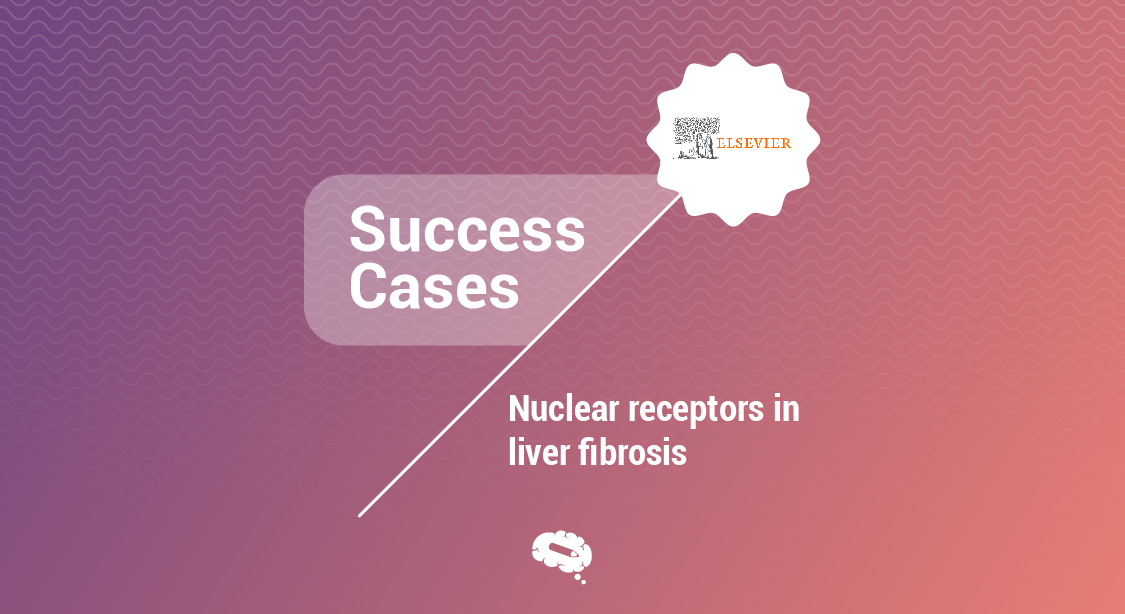The process of peer review plays a vital role in the world of academic publishing, ensuring the quality and credibility of scholarly research. This process is a critical evaluation system where experts in the field assess the merit, validity, and originality of research manuscripts before publication. Through a comprehensive examination of the peer review process, this article aims to explain its stages, importance, and best practices. Researchers and aspiring authors, using a peer review process, can navigate an evaluation process effectively, enhance the integrity of their work, and contribute to the advancement of scientific knowledge.
What Is Peer Review?
Peer review is a critical evaluation process that academic work undergoes before being published in a journal. It serves as a filter, fact-checker, and redundancy-detector, ensuring that the published research is original, impactful, and adheres to the best practices of the field. The primary purposes of peer review are twofold. Firstly, it acts as a quality control mechanism, ensuring that only high-quality research is published, especially in reputable journals, by assessing the validity, significance, and originality of the study. Secondly, it aims to improve the quality of manuscripts deemed suitable for publication by providing authors with suggestions for improvement and identifying any errors that need correction. The process subjects the manuscript to the scrutiny of experts (peers) in the field, who review and provide feedback in one or more rounds of review and revision, depending on the journal’s policies and the topic of the work.
Related article: The History of Peer Review: Enhance The Quality Of Publishing

The Importance Of Peer Review In Science
Peer review in science is important for several reasons. It ensures quality, validates research findings, provides constructive feedback, fosters collaboration, and maintains public trust in scientific research. It provides valuable insights, suggestions, and alternative perspectives that can enhance the quality of the research. Authors benefit from this iterative process, as it allows them to address any weaknesses or gaps in their work and improve the clarity and coherence of their findings.
Also read: What Is A Peer-Reviewed Article And Where Can We Find It?
Additionally, peer review serves as a platform for constructive criticism and feedback, it contributes to the advancement of scientific knowledge by fostering intellectual dialogue and collaboration. Through the critical assessment of research manuscripts, reviewers may identify potential areas for further investigation or propose alternative hypotheses, stimulating further research and discovery.
Types Of Peer Review Process
Peer review has various models. The specific type of peer review employed can differ between journals, even within the same publisher. Before submitting the paper, it is crucial to become acquainted with the peer review policy of the selected journal, this ensures that the review process aligns with expectations. To understand the different models, we will outline the most prevalent types of peer review.
Single-Anonymous Peer Review
Single-anonymous peer review, also known as single-blind review, is a prevalent model employed by science and medicine journals. In this process, the reviewers are aware of the author’s identity, but the author remains unaware of the reviewers’ identities. This approach maintains a level of anonymity to ensure impartial evaluation and minimize biases. The reviewers assess the manuscript based on its merits, scientific rigor, and adherence to the journal’s guidelines. Single-anonymous peer review helps maintain objectivity and fairness in the review process, allowing for an unbiased assessment of the research work.
Related article: The Role Of Single-Blind Review In Research Papers
Double-Anonymous Peer Review
Double-anonymous peer review, also known as double-blind review, is a method employed in many humanities and social sciences journals. In this process, the identities of both the author and the reviewers are concealed. The reviewers are unaware of the author’s identity, and vice versa. This type of review aims to minimize bias and ensure a fair evaluation of the manuscript based solely on its content and merit. By maintaining anonymity, double-anonymous peer review promotes impartiality and enhances the credibility and objectivity of the peer review process.
Triple-Anonymized Peer Review
Triple-anonymized review, also known as triple-blind review, ensures anonymity for both the reviewers and the author. At the submission stage, articles are anonymized to minimize any potential bias toward the author(s). The editor and reviewers do not have knowledge of the author’s identity. However, it is important to note that fully anonymizing articles/authors at this level can be challenging. The editor and/or reviewers still can deduce the author’s identity through their writing style, subject matter, citation patterns, or other methodologies, similar to double anonymized review.
Open Peer Review
Open peer review is a diverse and evolving model with various interpretations. It generally involves reviewers being aware of the author’s identity and, at some stage, their identities being disclosed to the author. However, there is no universally accepted definition for open peer review, with over 122 different definitions identified in a recent study. This approach introduces transparency to the peer review process by allowing authors and reviewers to engage in a more direct and open dialogue. The level of openness may vary, with some forms of open peer review including public reviewer comments and even post-publication commentary. Open peer review aims to foster collaboration, accountability, and constructive feedback within the scientific community.
Post-Publication Peer Review
Post-publication peer review is a distinct model where the review process takes place after the initial publication of the paper. It can occur in two ways: either the paper undergoes a traditional peer review before being published online, or it is published online promptly after basic checks without undergoing extensive pre-publication review. Once the paper is published, reviewers, including invited experts or even readers, have the opportunity to contribute their comments, assessments, or reviews. This form of peer review allows for ongoing evaluation and discussion of the research, providing a platform for additional insights, critiques, and discussions that can contribute to the refinement and further understanding of the published work. Post-publication peer review emphasizes the importance of continued dialogue and engagement within the scientific community to ensure the quality and validity of published research.
Registered Reports
Registered Reports is a unique peer review process that involves two distinct stages. The first stage occurs after the study design has been developed but before data collection or analysis has taken place. At this point, the manuscript undergoes peer review, providing valuable feedback on the research question and the experimental design. If the manuscript successfully passes this initial peer review, the journal grants an in-principle acceptance (IPA), indicating that the article will be published contingent upon the completion of the study according to the pre-registered methods and the submission of an evidence-based interpretation of the results. This approach ensures that the research is evaluated based on its scientific merit rather than the significance or outcome of the findings. Registered Reports aim to enhance the credibility and transparency of research by focusing on the quality of the research question and methodology rather than the outcome, reducing bias and providing a more robust foundation for scientific knowledge.
Peer Review Process
The peer review process is a critical component of academic publishing that ensures the quality, validity, and integrity of scholarly research. It involves a rigorous evaluation of research manuscripts by experts in the same field to determine their suitability for publication. While the specific steps may vary among journals, the general process follows several key stages.
Submission: Authors submit their research manuscript to a journal, adhering to the journal’s guidelines and formatting requirements.
Editorial Evaluation: The editor assesses the manuscript’s alignment with the journal’s scope, relevance, and overall quality. They may reject the manuscript at this stage if it does not meet the journal’s criteria.
Peer Review Assignment: If the manuscript passes the initial evaluation, the editor selects appropriate experts in the field to conduct the peer review. Reviewers are chosen based on their expertise, ensuring a thorough and unbiased evaluation.
Peer Review: The reviewers carefully examine the manuscript, assessing its methodology, validity of results, clarity of writing, and contribution to the field. They provide constructive feedback, identify strengths and weaknesses, and recommend revisions.
Decision: Based on the reviewers’ feedback, the editor decides the manuscript. The decision can be acceptance, acceptance with revisions, major revisions, or rejection. The author(s) are notified of the decision along with any specific feedback.
Revision: If the manuscript requires revisions, the author(s) make necessary changes based on the reviewers’ comments and suggestions. They address each point raised by the reviewers and provide a detailed response outlining the modifications made.
Final Decision: The editor re-evaluates the revised manuscript to ensure that all requested changes have been adequately addressed. The editor then makes the final decision regarding its acceptance.
Publication: Once accepted, the manuscript undergoes the final stages of copyediting, formatting, and proofreading before being published in the journal. It becomes accessible to the wider academic community, contributing to the body of knowledge in the respective field.
Potential Problems Of Peer Review
While peer review is an essential component of the scholarly publishing process, it is not without its potential problems. Some of the key challenges and limitations of peer review include:
Bias and Subjectivity: Reviewers may possess personal biases that can influence their manuscript assessment, potentially leading to unfair evaluations or inconsistent judgments. Subjectivity in the interpretation of research findings and methodology can also impact the review process.
Delays in Publication: Peer review can be a time-consuming process, with reviewers taking varying lengths of time to provide feedback. This can result in delays in the publication of research, potentially hindering the timely dissemination of important findings.
Lack of Standardization: Reviewers’ expertise, qualifications, and reviewing criteria may vary, leading to inconsistencies in the evaluation process. The lack of standardized guidelines for reviewing can result in discrepancies in the quality and rigor of the peer review process across different journals and disciplines.
Inefficiency and Burden: Reviewers are typically unpaid volunteers who dedicate their time and expertise to reviewing manuscripts. The increasing volume of submissions and shortage of qualified reviewers can place a significant burden on the peer review system, potentially leading to delays and compromised quality.
Limited Scope for Detecting Errors: While peer review aims to identify and rectify errors or methodological flaws in manuscripts, it is not foolproof. Reviewers may not always have access to the raw data or the resources to conduct a thorough replication of the study, making it challenging to detect certain types of errors or misconduct.
Publication Bias: Peer review can inadvertently contribute to publication bias, as journals may have a preference for publishing positive or statistically significant results, potentially neglecting studies with null or negative findings. This can create an imbalanced representation of research in the literature.
120% Growth In Citations For Articles With Infographics
Mind the Graph platform provides valuable support to scientists by offering a range of features that enhance their research impact. One notable benefit is the use of infographics, which has been shown to significantly boost the visibility and recognition of scientific articles. This helps to capture the attention of readers, promote a better understanding of research findings, and increase the likelihood of citations and recognition within the scientific community. Sign up for free now!

Subscribe to our newsletter
Exclusive high quality content about effective visual
communication in science.






